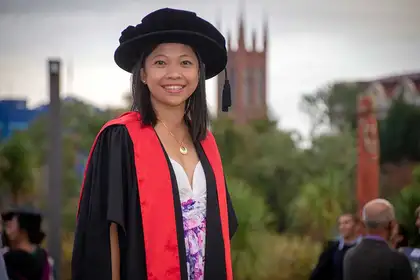
Seven staff members were conferred with doctoral degrees among the more than 1000 graduates across the five Palmerston North ceremonies this week.
A summer internship led to Dr Chok’s master's and subsequent PhD working with Ravensdown looking at improving aerial topdressing (applying granular fertiliser from aircraft) on hill country farms in New Zealand.
Conventional applications apply a single application rate to a whole farm, However, this is inefficient as soil nutrient concentrations vary significantly. Therefore variable rate application technology was introduced to enable aircraft to apply multiple application rates. Dr Chok's research investigated the accuracy, precision and capability of a variable rate application system.
She found the system was able to meet New Zealand standards for a good aerial application. However, wind conditions significantly affected the results. Consequently, a ballistics model was validated to predict the landing position of fertiliser particles based on initial conditions. The model was developed into a tool that re-positions the application area to minimise off-target application, due to wind conditions.
Overall, Dr Chok's research showed that using variable rate application technology and the ballistics model improves the aerial application of granular fertiliser in New Zealand.
“It’s a cool feeling as my work had real world applications where the solutions from my project is implemented by the aerial spreaders so that farmers can benefit immediately,” says Dr Chok.
She will now take up a role in the University’s new AgriTech Partnership as a junior research officer working with the innovative Fenix hyper spectral imaging system, a tool used in precision agriculture, which was first developed for military reconnaissance and space exploration. The project is part of the Primary Growth Partnership between Ravensdown and the Ministry for Primary Industries (MPI).
New Zealand dairy farmers are known internationally for their high quality products and efficient management practices that make their products attractive and competitive to international markets. Farmers strive to improve the efficiency of their management systems and welfare of their stock in various ways, including minimising the culling of dairy cattle because of disease-related causes and the on-farm death of their animals.
However, New Zealand farmers have not had current or complete information on the extent or cause of cattle losses to inform and compare their own herd’s performance and further develop their animal health programmes. Research undertaken by Dr Chris Compton for his PhD thesis has helped to fill this vital gap.
Dr Compton, a senior lecturer with the School of Veterinary Science, defined for the first time the current and past trends in the rates of culling and on-farm deaths of dairy cattle, for both New Zealand’s and international herds. He demonstrated that overall, the rates for these losses in New Zealand are less, and often considerably less, than those in other countries with modern dairy industries, but that a wide range of individual herd performances indicates further potential for improvement. In addition, he identified disorders especially commonplace around the time of calving that increased the rate of disease-related culling and death of cows, showing preventive health programmes focused on these disorders should be priorities.
To support any management changes, Dr Compton used a simulation model to estimate the potential for improved financial returns for herd owners with achievable reductions in disease-related culling and on-farm death. Together, the findings in Dr Compton’ thesis provide new benchmarks and information to support New Zealand dairy farmers develop their own management targets and animal health programmes to improve the efficiency of their farm systems and welfare of their animals.
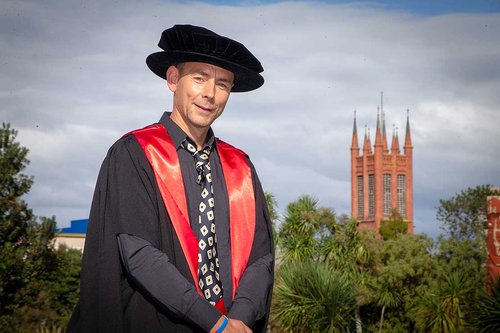
Emigrants in search of new opportunities are seen as valuable contributors of new ideas and knowledge to their homeland – but seeking diaspora input for economic development can have unexpected effects, as Dr Axel Malecki's doctoral research reveals.
Dr Malecki, who teaches in Massey’s Bachelor of Arts programme at the Manawatū campus, investigated the political repercussions for a Chilean organisation – ChileGlobal – designed to tap into that nation’s diaspora (a scattered population whose origin lies in a separate geographic locale) in Europe, the United States and United Kingdom. He graduated in the College of Humanities and Social Sciences ceremony today.
In his thesis Repoliticising Development: The Diaspora Knowledge Network (DKN) ChileGlobal and its contribution to development in Chile, he examined diaspora strategies that “tend to represent diasporic communities as development actors whose entrepreneurial expertise, business knowledge and access to resources can be usefully captured via social and monetary remittances.”
While historical film audience research has flourished internationally since the 1980s, New
Zealand’s historical movie-going audiences have largely been ignored. Dr Pauline Knuckey, a special collections librarian at the Massey University Library, investigated the movie-going habits of New Zealanders during the 1950s, 1960s and 1970s to increase the understanding of this once phenomenally popular pastime. Her research drew on 600 survey responses, official statistics and reports and archival material to ascertain changes in movie attendance and preference over these three decades.
Dr Knuckey found that while the primary attractions of escapism, the big screen entertainment and the opportunity for social engagement remained important motivators to movie-goers, a number of intrinsic and extrinsic factors were in force that changed our once habitual movie-going practices. Ms Knuckey’s research provides valuable insight into New Zealand’s cultural and social history in the decades from 1950-1980.
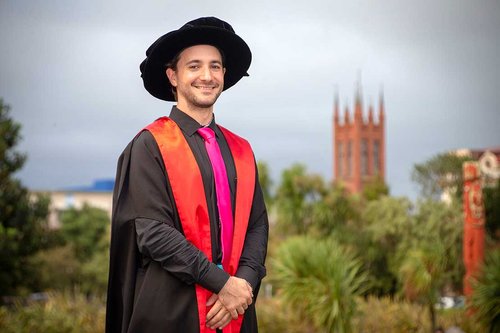
For Dr Matt Miller, mountain biking is his life. So, the opportunity to move to Palmerston North from the United States to study his passion for his PhD, was too good to pass up.
The 31-year-old Pennsylvanian, who now works as a sport science lecturer for the School of Sport, Exercise and Nutrition, invented the Brake Power Meter, which automatically measures braking power and time spent braking while you ride – a world first.
The invention allows cyclists to accurately quantify braking, analyse their braking patterns, and use the data to train their braking style to shave minutes off their lap time.
Dr Miller and his supervisor Dr Phil Fink spent more than four years researching the importance braking has on mountain bike race performance and rider fatigue. Dr Miller says the invention improves riders’ performance by enabling them to target braking training, resulting in increased speed and performance.
Drawing on his ten-plus years of elite mountain bike racing in America, Dr Miller says the meter is a game-changer for the industry. “What wins races? Speed. Speed is a result of how hard you pedal [propulsive power] and how little you slow down. Changing your speed depends on how fit, or unfit you are, and of course how much you brake. We think braking indicates the level of a rider’s skill.
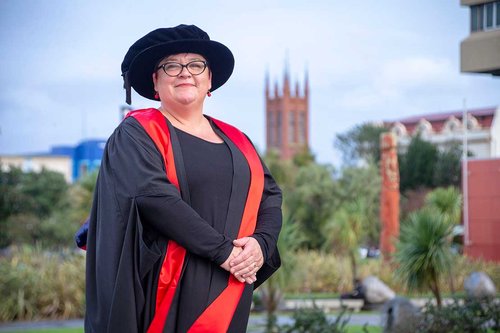
For most patients admitted to an intensive care unit (ICU) in New Zealand their stay is short, however, as a consequence of advances in life-sustaining therapies a new group of patients has emerged. Surviving their initial critical illness, these patients become dependent on life-sustaining interventions for a prolonged period.
Dr Claire Minton, a lecturer at Massey University’s School of Nursing, explored the experiences of patients, their families and healthcare professionals during the trajectory of a prolonged critical illness, for her PhD thesis. Her research provides insights into the complexity of care during prolonged critical illness, which can result in interventions, education and research targeted to improve outcomes and experiences.
Dr Minton examined this situation from the viewpoint of the patient, their family and healthcare professionals who provided their care throughout their journey, while in the ICU.
This study also highlighted the complexities in clinical practice. “This research highlighted the complexity nurses face every day at work, as they navigate a complex group of patients that need a lot of nursing, in an environment that can be unsuitable and in a model of care that focuses on acute not chronic care. With only finite resources in New Zealand for ICU services, nurses do an amazing job at supporting these patients and their families during a prolonged period of difficulty,” she says.
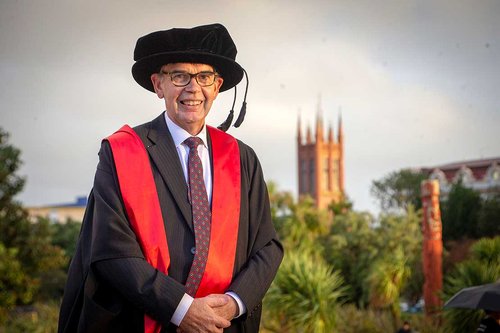
Managing players’ pleas to get on with the game instead of lining up to practice skills is a predicament at the heart of sports teaching and coaching – and the topic of new research for Massey.
In New Zealand, traditional skill-based game teaching models in physical education and sports coaching have gradually been supplemented by the Game Centred Learning (GCL) model. Although elements of GCL had been employed for at least forty years, no detailed research existed on how, when and why they developed in New Zealand.
Dr Dennis Slade’s PhD thesis, entitled “Please Sir, Can We Play a Game?” Transforming Games Teaching and Coaching: A Practitioner’s Perspective, examines this phenomenon in New Zealand between 1945 and 2015. His research establishes that GLC was not mandated by educational policy. Rather, development and dissemination of GCL evolved through various combinations of insights from early luminaries in the field, a new guard of physical educators in pre-service teacher education colleges, and a new socio-ecological perspective in PE syllabi in 1999 and 2007.